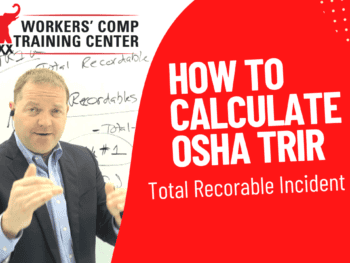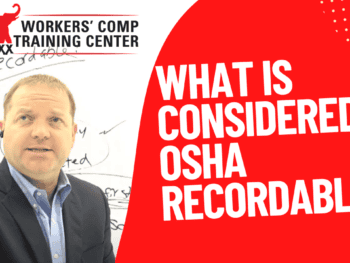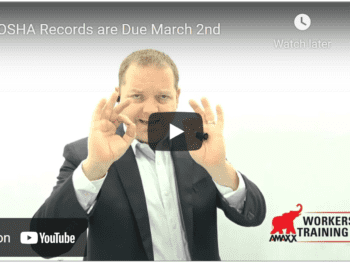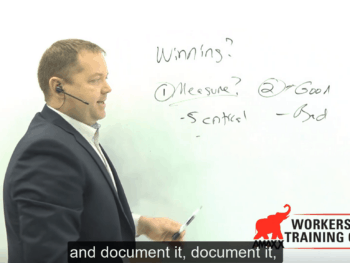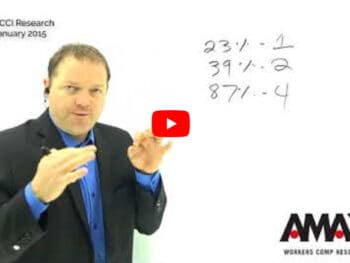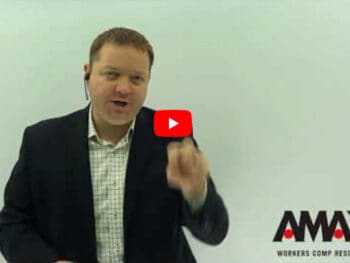From time to time an external claims auditor comes across a workers’ compensation claim approaching perfection in the way it was handled. The following is a synopsis of such a claim profiling the use of Best Practices.
Click Link to Access Free PDF Download
2-Claim File Creation & Assignment
The adjuster discussed with the employee’s supervisor how the injury occurred. The supervisor confirmed to the adjuster the employee violated established safety procedures. The proper procedure to work on the slurry line was to shut the line down and drain the slurry pipe before working on it. The supervisor advised no one saw the accident, but coworkers heard the employee’s screams and went to his aid. The adjuster obtained the supervisor’s contact information and advised the employer of the Nurse Case Manager being assigned to the claim.
The employer’s claims coordinator provided all the information on the employee, information about the EMS company, the hospital’s name and address, and family contact information for the employee. The claim in-take person requested the employee’s wage statement for calculation of indemnity benefits and the completion of the E1 (Employer’s First Report submitted to the Industrial Commission).
After the telephone report of the claim by the employer, the claims office finished setting up the new claim and entered all the appropriate data into the computer system.
The adjuster contacted the hospital and confirmed the employee was transferred from the emergency room of the hospital to the severe burn unit.
The adjuster contacted the employee’s residence, spoke to a neighbor baby-sitting the children, obtained the wife’s cell phone number and left contact information with the baby-sitter in case the adjuster was unable to reach the employee’s wife. The adjuster contacted the wife who indicated she only had a minute to talk as she was waiting on the burn unit the doctor to talk to her. The adjuster requested the employee’s wife to call back as soon as she could.
4-Nurse Case Management & Medical Intervention
When the employee’s spouse called the adjuster back, the adjuster obtained the information on the employee’s medical condition, the names of the treating physician and inquired about visiting the employee. The spouse said the employee was sedated. The adjuster advised the employee’s spouse that a NCM was employed to assist her in the coordination of the employee’s medical care and to facilitate the employee’s recovery.
The adjuster then called the NCM with the information learned from the employee’s spouse and had the NCM contact the spouse. After the NCM spoke to the spouse, the NCM made an appointment with the burn unit physician for the NCM and adjuster to meet with the physician, employee and the spouse the following day.
At the meeting the next day with the physician, employee and the spouse, the NCM explained how she coordinate the medical care for the employee. The adjuster was able to speak directly with the employee and confirm the accident details. The NCM explained how she would arrange the transition from hospital burn unit care to home care and for the follow up care with the dermatologist, neurologist and other specialists.
Employee contact completed, medical provider contact completed and the accident investigation completed.
5-Reserves
6-On-Going Contacts
On-Going Contacts started and planned for the future.
FREE DOWNLOAD: “5 Critical Metrics To Measure Workers’ Comp Success”
Throughout the course of the claim file, the adjuster was in regular contact with the employee, the NCM and the insured.
7-Compensability, Average Weekly Wage Confirmation, Benefits
8-ISO Indexing
9-First Report
10-Status Reports
11-Return-to- Work Program
12-Subrogation and Second Injury Fund
13-Litigation Management
14-Diary
Full and complete claim handling by the adjuster is necessary for the best results on a claim. When the adjuster closely follows the Best Practices established by your workers’ compensation program, the outcome of the workers’ comp claims are better for both the employer and the employee.
Author Robert Elliott, executive vice president, Amaxx Risks Solutions, Inc. has worked successfully for 20 years with many industries to reduce Workers’ Compensation costs, including airlines, health care, manufacturing, printing/publishing, pharmaceuticals, retail, hospitality and manufacturing. He can be contacted at: Robert_Elliott@ReduceYourWorkersComp.com or 860-553-6604.
Podcast/Webcast: Claim Handling Strategies
Click Here:
http://www.workerscompkit.com/gallagher/podcast/ Claim_Handling_Strategies/index.php
FREE WC IQ Test: http://www.workerscompkit.com/intro/
Transitional Duty Calculator: www.reduceyourworkerscomp.com/transitional-duty-cost-calculator.php
Do not use this information without independent verification. All state laws vary. You should consult with your insurance broker or agent about workers’ comp issues.
FREE DOWNLOAD: “5 Critical Metrics To Measure Workers’ Comp Success”





